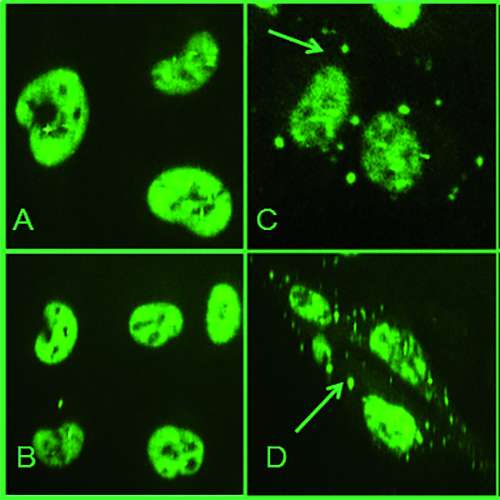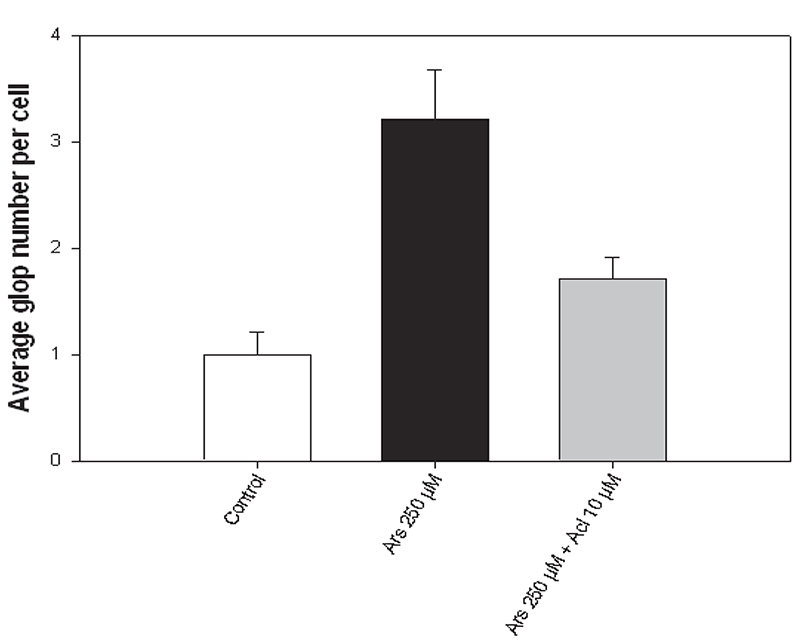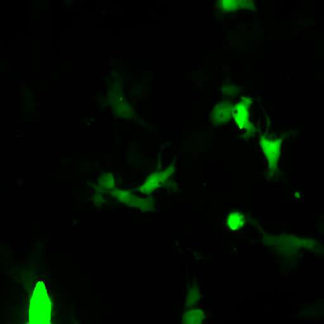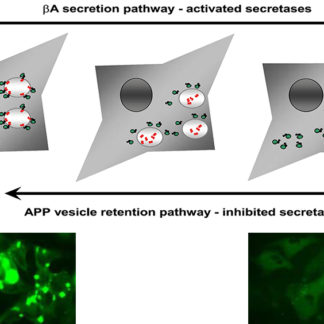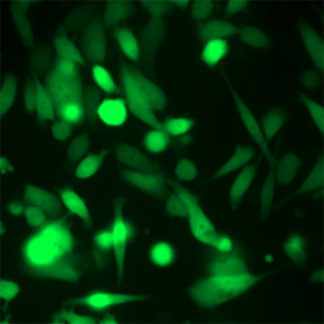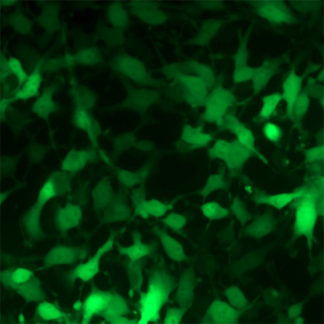Description
TAR DNA-binding protein 43 (TDP-43) Stress Granules Assay Cell Line is a fluorescence cell-based assay cell line for high content screening. The cell line allows the quantification of pathological TDP-43 globs in the nucleus and cytosol. This cellular model consists in a U2OS cell line stably expressing inducible fluorescent TDP-43. These cells can further expand for more than 30 passages.
Amyotrophic lateral sclerosis (ALS) is one of the most common degenerative disease of the motor neuron system. The TDP-43 pathology seems to be a dominant type of pathology across sporadic ALS types. TDP-43 Stress Granules Assay cell line allows the quantification of pathological TDP43 globs into the nucleus and cytosol. This model also permits to monitor the TDP-43 protein distribution in living cells. It also helps studying the protein localization pattern in the space and time. The model also allows quantifying the fluorescence aggregation inside the cells.
To perform the assay, we induce fluorescent TDP-43 expression by adding IPTG to the cell culture medium. After TDP-43 expression induction and during the assay, we incubate the cells with test compounds and Sodium Arsenite to induce the TDP-43 aggregation. Finally, we quantify TDP43-tGFP nuclear globs using the BD Pathway HCS Reader and Attovision Compartimentalization Software.
Applications:
- TDP-43 Stress Granules Assay cell line allows the quantification of pathological TDP43 globs.
- This model permits to evaluate the TDP-43 protein distribution in living cells studying the protein localization pattern in the space and time.
- This model provides a strategy to evaluate drugs without cell permeability.
- Adapted to HCS analyses based on image algorithms to test cytosolic and nuclear globs generation process.

